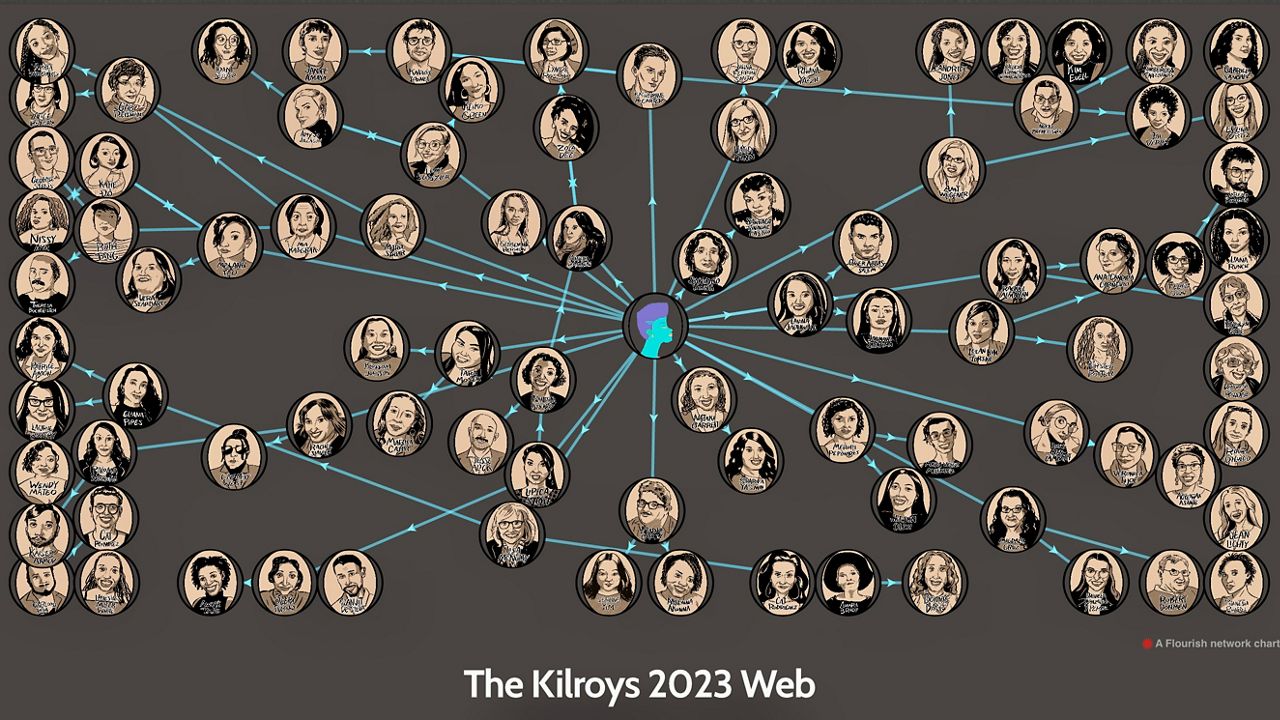EL SEGUNDO, Calif. — Theater-makers often play many different roles, not just on stage.
Take Gina Young.
"I'm a playwright, director," they began. "I create devised theater. I teach a feminist acting class."
Young is also non-binary and a member of The Kilroys, a bicoastal collective of theater-makers on a mission to bring parity on American stages.
"It is such a discrepancy," Young said. "About 67% of the plays produced on American stages are written by white men. And that doesn't actually reflect the demographics of our country. Everyone else is sharing that smaller piece of the pie."
The "everyone else" is a large and diverse group: Black, Indigenous, and other people-of-color writers, women, and trans and non-binary artists. That's not only unfair to them, Young says, it's also unfair to audiences.
"I think that the beauty of theater is that it really allows us to learn about other people and other people's experiences and actually walk in their shoes," they explained. "And if we're not really seeing the fullness and the breadth of the human experience, what are we doing?"
This is why the Kilroys began compiling The List, an annual crowdsourced catalog of the best unproduced or under-produced plays by women, trans and non-binary playwrights.
They've had quite a few successes. "Our Dear Dead Drug Lord" by Alexis Scheer was on the 2019 list and just ran at the Kirk Douglas Theatre. Larissa FastHorse's "The Thanksgiving Play," an early pick, has had multiple productions, including at the Geffen Playhouse and a recent Broadway run.
The List was last released in 2020, but this year, The Kilroys are back with a new initiative called The Web.

Young described it as a way to uplift the entire ecosystem – not only plays but the people championing those plays and artists, folks on the ground doing the work to level the playing field — people like Veronica Tjioe, a longtime Kilroys fan.
"Being recognized by The Kilroys was on my, like, life dream goal," they said. "They are like heroes of mine."
They can rattle off several playwrights and plays they admire that were once on The List — "Cambodian Rock Band," "Hannah and the Dread Gazebo."
"All these plays began having success because somebody lifted them up and put them on the Kilroy's List," they explained.
Whereas some playwrights describe the role they've written as a white male, aged 25-32, with dark hair, Tjioe, who describes her work as magical realism, sees such descriptions as limiting.
"I try to write roles that are expansive enough to allow anyone to tap into them," they explained. "Anybody who is an actor can be in my plays [and] bring who they are to it and their creativity and their rhythms. I find that to be exciting because even if it's the same script, it's going to be a different play every time. And I think that's the way it should be."
The Claremont native has a small theater company called the Attic Collective, rehearsing wherever they can, from someone's tiny apartment to The Common Space Brewery in El Segundo, which Tjioe's partner owns.
"This is the way that most of us make theater," they said. "We don't have access to space or the funds to rent space."
That's part of what The Kilroys are trying to change with The Web, amplifying voices missing from American stages.
Scrolling through the illustrated, interactive map, Young sees a tapestry of often untapped talent.
"The beautiful diversity of the American theater," they called it. "Like this is who, you know, I want to work with, and this is who I want to see produced."
The group is not sure what lies ahead for The Web. It could be a one-time event. Maybe it will be updated annually, but they hope it will be a reminder that while theaters are struggling and, in some places, closing, the art form itself is not dying.
"The people are here and the people are creating and the people are brilliant," Young said, "and so we want to just really honor and uplift that."
In many ways, they do that by weaving together a more inclusive community with a stage big enough for all.



